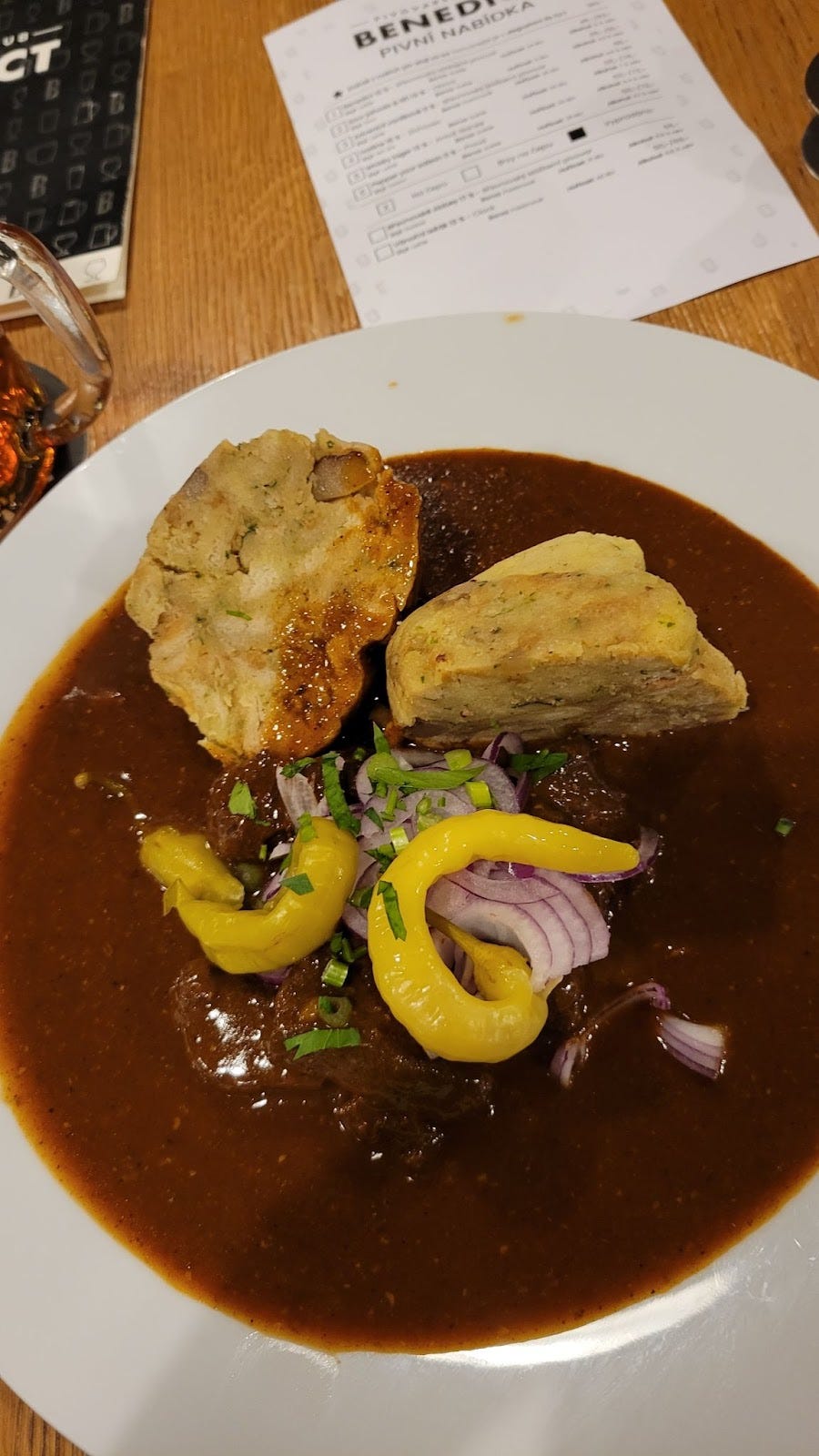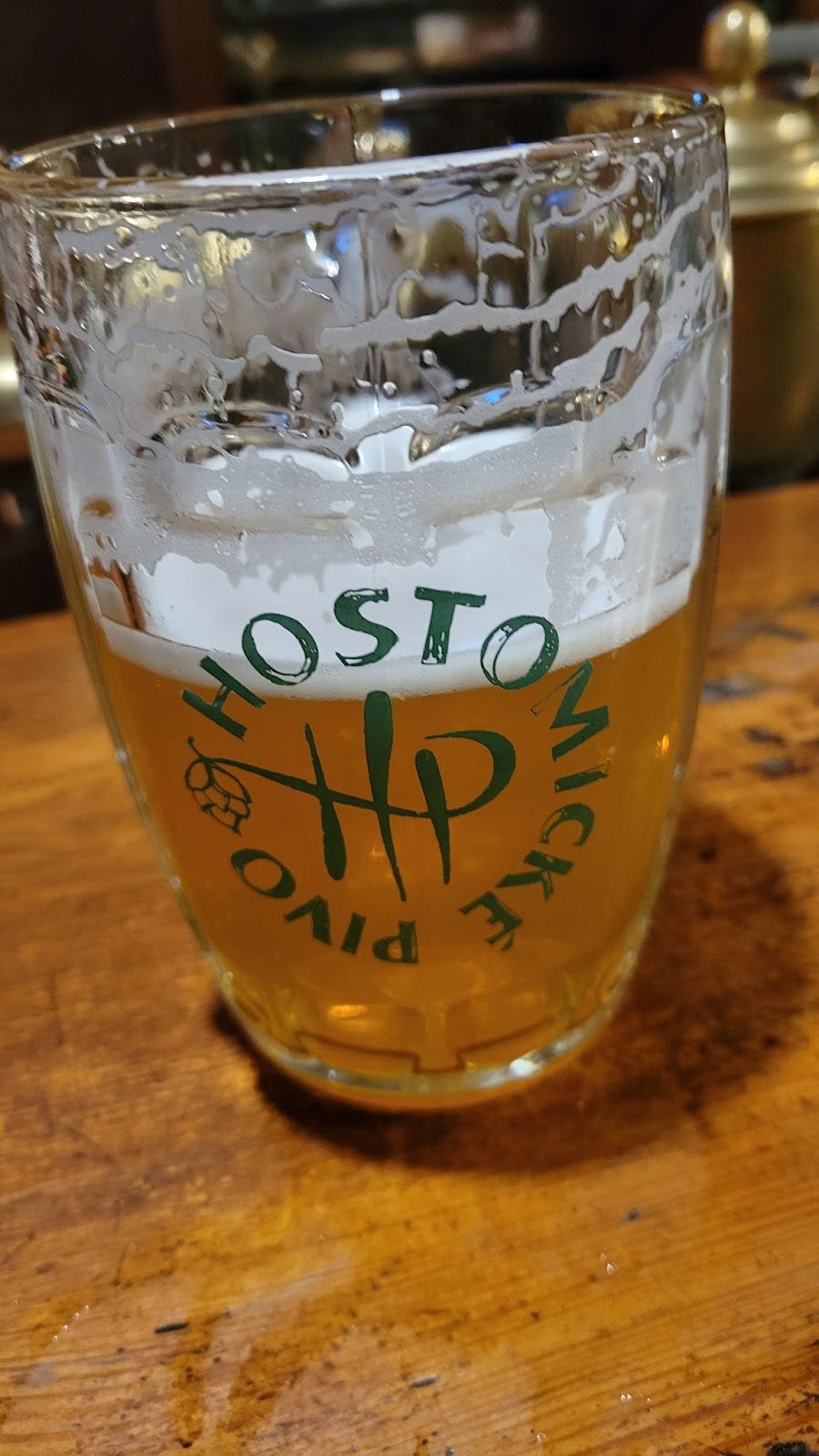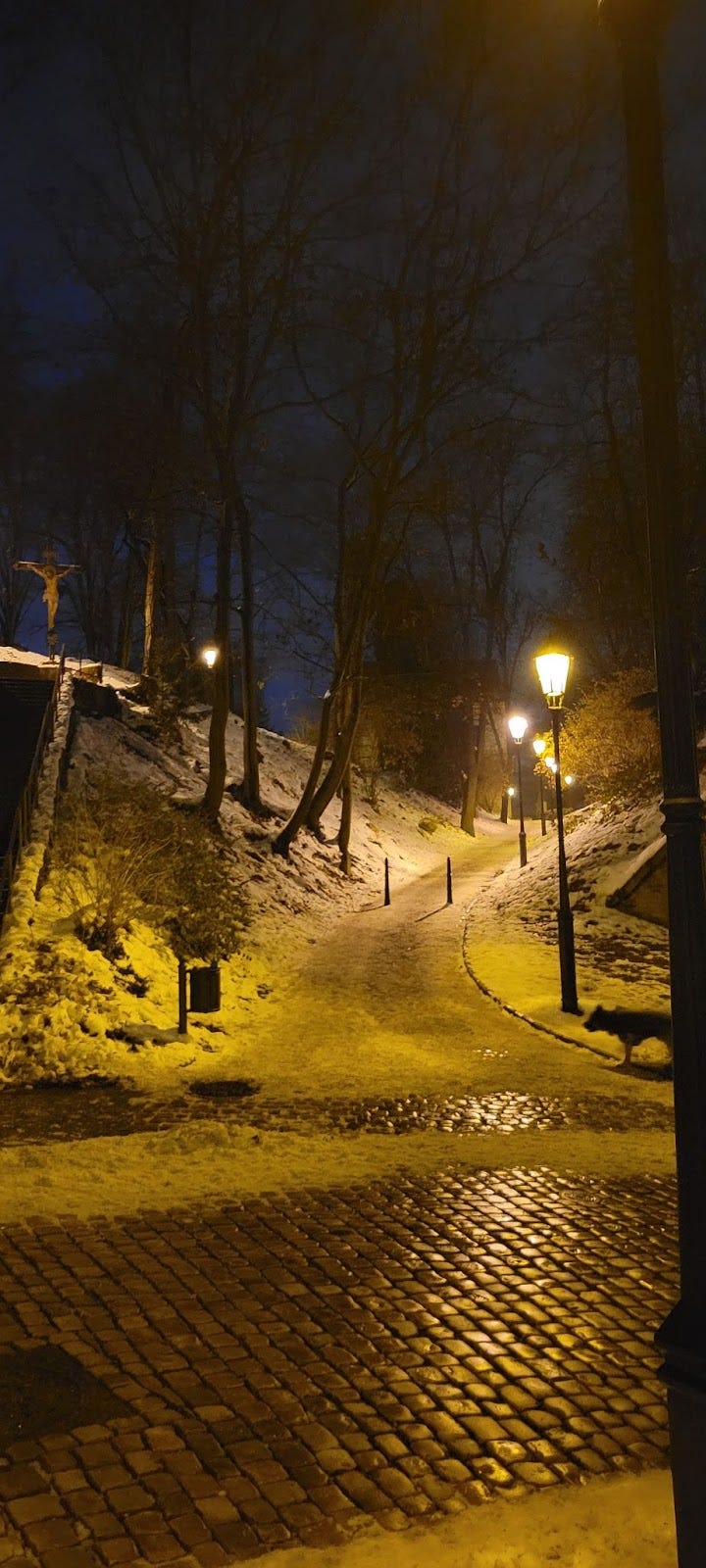Guest Post: Country Review: Czech Republic
Guest post by a writer who wishes to remain nameless, who went to Prague last winter and finally got around to writing a review once I started writing mine.
Preface
Much ink has been spilt on the question “who is the Czech?”: what are his beliefs and customs, what is his habit of dress, and so on. Even the translation of his language into English is widely considered to be a solved problem. The central question of this review, therefore, will be “how is the Czech?”: is he doing okay? What has he made of his lot in life, and is he satisfied with his choices?
First impressions: 9/10
When I first arrived in the Czech Republic, I immediately put the country’s institutions to the test: I lost my baggage on the transfer flight from Paris. The woman at the baggage center asked me to fill out a paper form with the incomprehensible characters forming the “address” of my hotel11, which made me skeptical of the Czech people’s technological capabilities. This doubt was soon put to rest, though: my bags reached my hotel the next day, and my journey to the hotel was made extremely convenient by Pid Lítačka, a proper first-world transit app granting access to Prague’s generous transportation system. From this we conclude that, while the Czech Republic has limited tech tree points, their strategy for spending them is well-considered.
Besides the fast, quick, convenient trip from the airport to the hotel, Prague’s train system yielded a few more observations on my first night in Prague:
Prague is a paradise for Train Challenge2 speedrunners: there are only three lines (A, B, and C), and one can go from the A to the C line by taking only two stops on the B. Could you be the one to break the next minute barrier?
Ever whimsical, the Czech bedecks his trains with holiday finery. I’m not even sure if the Christmas trains carry passengers, they may actually be exclusively for fun!
The ads along the escalator are lined up perpendicularly to the escalator’s travel plane, rather than parallel with the Earth’s gravity, which is disorienting, especially considering how deep those escalators go.

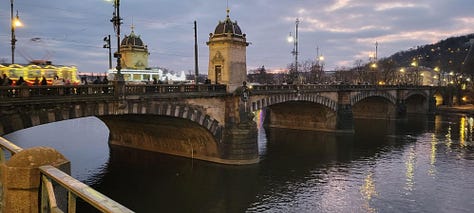
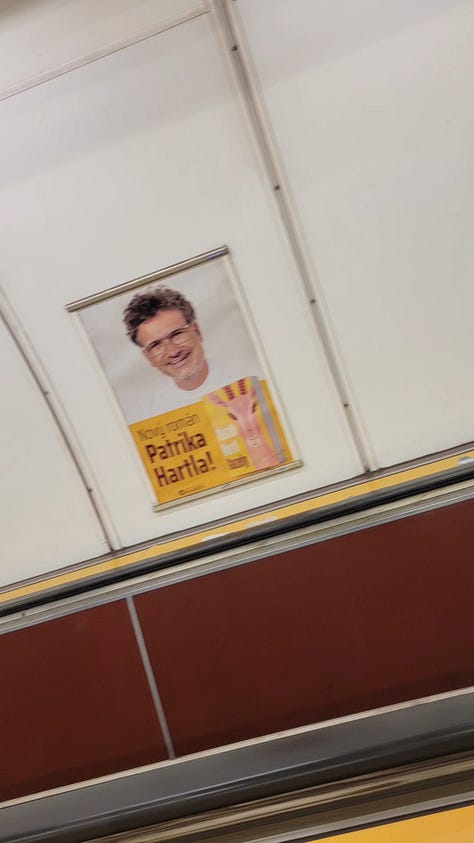
On my first morning in Prague, the air was clear, the snow was fresh, and the sidewalks were slippery. My bags were recovered that afternoon. I started my adventure optimistic and pleased, the minor snags easily balanced out by the easy travel and 0-indexed floors. The Czech Republic is good but imperfect: 9/10.
Food: 8/10
Czech cuisine isn’t for everyone. It’s heavy on red meat, with the only vegetables allowed being sauerkraut, potatoes, and onions. The meat comes submerged in a plateful of sauce and with a side of “dumplings”, a doughy boiled bread designed to soak up the gravy, expand, and satisfy your hunger throughout lean times and hard winters when meat is scarce. Thus every meal is a reminder of the fortitude of the Czech’s forebears. This parable, daily rehearsed to him by his food, nourishes his spirit and strengthens him against the travails and calamities of the day.
The sauce is constructed of formidable flavors: cranberries and onions for beginners, “horseradish as a meal” for the connoisseur. Lager is the Czech’s beer – and beverage – of choice, Pilsener being the most common variety. His beer is weaker than the American’s IPA, but even this he stretches for longevity, pouring it in such a way as to produce a mug filled with half beer and half foam, which he calls “Šnyt”.
Czech cuisine is not for everyone, but it was definitely for me. As a lover of strong flavors, plentiful beer, and pale brown vegetables, Prague was a carnival of epicurean delight. A few highlights:
[Not pictured] My first lunch was beef neck in horseradish sauce with dumplings, with a Šnyt beer to drink (here). (It’s similar to the goulash, but with no peppers on top and a white, creamy sauce instead of red). This was my sign that I was in the right place.
Bramboračka, savory potato pancakes, similar to Jewish latkas or American hash browns. A culture’s fried potato is usually my favorite food in that culture, and this was definitely up there. (Literally, too, since I got it by Petrin tower. Fun fact: the top of Petrin tower is higher in altitude than the top of the Eiffel tower!).
Palačinky, in my case dessert crepes, with ice cream and strawberry jelly. After a delicious plate of fried pork chops, this warm/cold, fruity/creamy dish was an unmatchable finish to the evening (here).
Deconstructed hot dogs, a subclass of Czech cuisine consisting of hot dog ingredients laid out separately on a plate. The standard sausage plate is the most obvious example, consisting of sausage, bread, and garnishes, but this class also includes pork knee, an unlikely delicacy. You get a pound and a half (including bone) of roasted pork with crispy, fried skin; a pile of pickles, sauerkraut, and onions; a bowl each of mustard and horseradish; and toast.
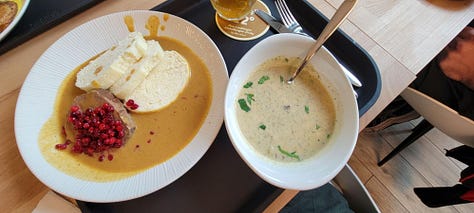
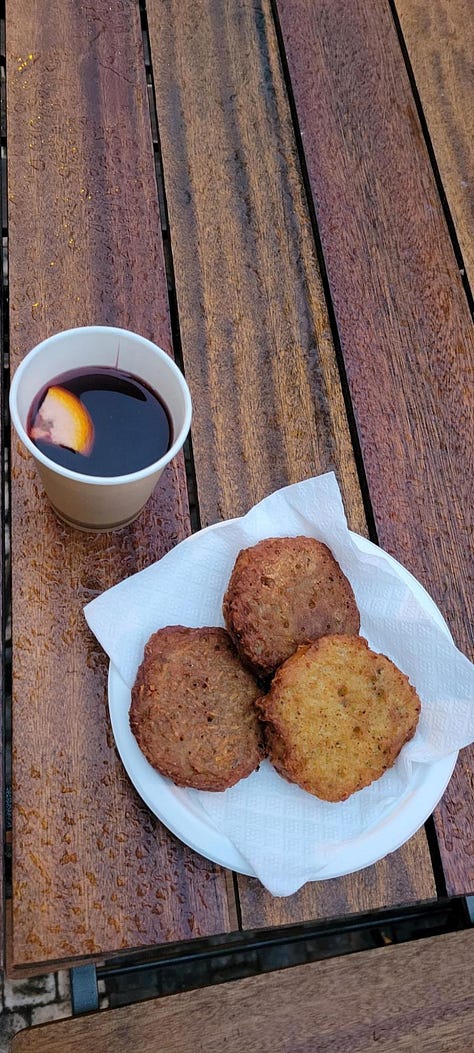

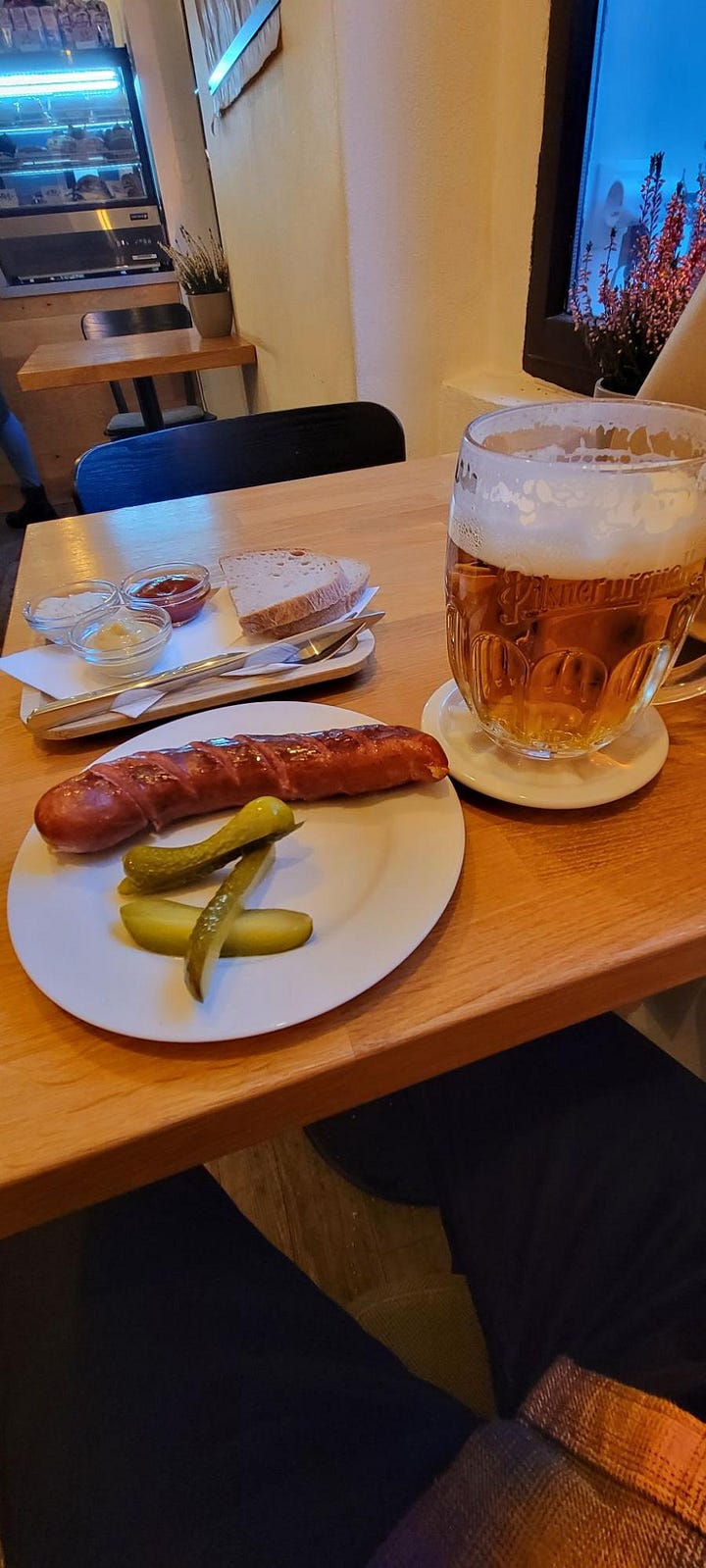

To the visitor’s astonishment, the most common fare besides Czech is Vietnamese, and besides being a refuge for the timid American’s palate, the Vietnamese food there was pretty solid. It’s comparable to what you can get in America, but without the same variety. The Vietnamese population in Prague, and thus the Pho, is a relic of the Czech Republic’s communist past. Coincidentally, so is Kofola, a licorice cola that the Czech developed as an alternative to Coca-Cola under communism. Kofola is enjoyable as a novelty, but also does not share the wealth of variations enjoyed by its American counterpart.
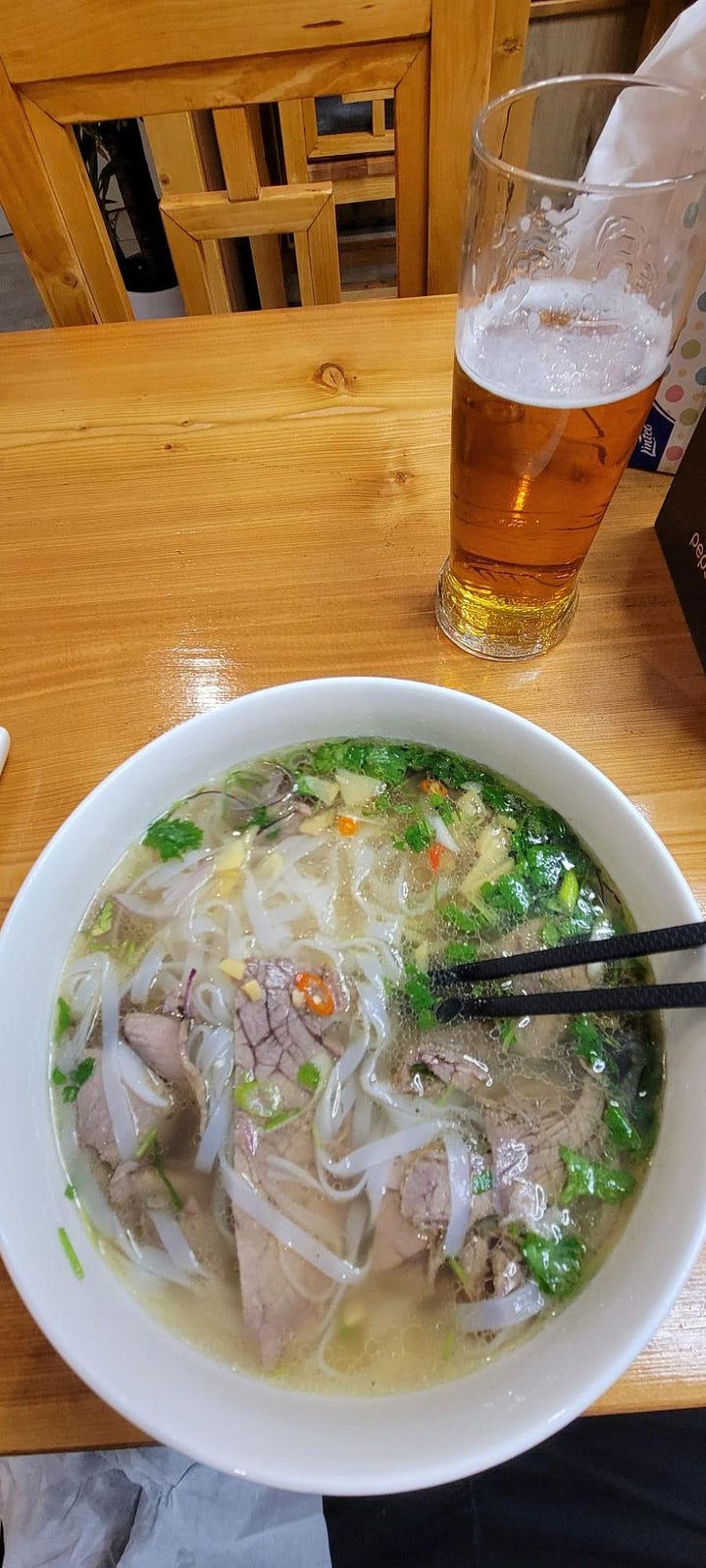
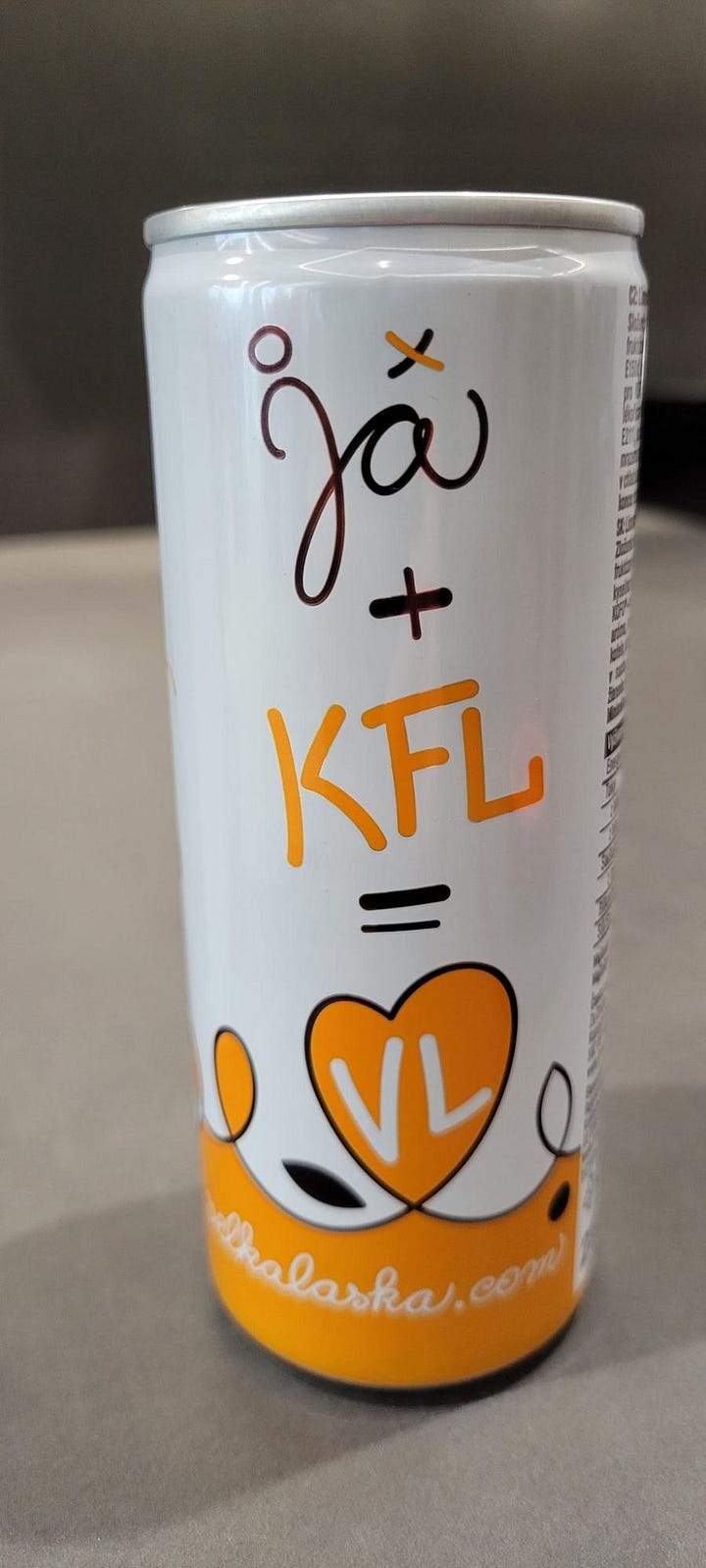
This is a metaphor: a people with the persistence of spirit to shed communism (as the Czech did in 1989) are a people that can scrape out a semblance of thriving even under communism. Developed as it was under a regime without freedom, however, this creativity resulted in a stagnant monoculture.
For two weeks, Czech cuisine was an unmitigated treat for me. I’m not docking any points for the unapproachability of Czech food to the median American visitor, but I am docking points because water costs money and my body was starved of green vegetables by the end: 8/10.
Tipping: 4/10
One Friday night, I stumbled into a hole in the wall bar and asked for a Pilsener. The bartender was insulted, exclaiming in broken English that Pilsener is crap. Thankfully, another patron noticed my predicament and ordered for me. Thoroughly embarrassed, my plan was to watch the soccer match on the TV while I sipped my drink, then leave.
Then Jakub arrived. Jakub’s English was better than the bartender’s, so he talked to me. He ordered another beer for me, then taught me a couple of dirty phrases for “I’m drunk” in Czech. Since I was known around the bar as the clueless American, he let me in on a little secret: Czech tipping.
In Czech restaurants, you pay at the cash register when you’re done; instead of filling out a receipt with your tip and final amount, the server verbally tells you the price of your meal, and you are expected to respond with a different, higher price that you’d like to pay instead. It’s typical to round up a bit, adding 5-15% depending on how you enjoyed yourself. The exchange will look something like “180 crowns”, “make it 200”, “thank you!”. When it came time to leave the bar, my knowledge was tested, and I mercifully passed.
However, Jakub from the bar wasn’t the only person who explained tipping to me. Jakub from work also explained it, while we were out to lunch one day. He had also (correctly) thought that perhaps the visitor wouldn’t be aware of this hidden Czech custom. Notable here is that the set of people who explained Czech tipping to me is exactly equal to the set of people I met in the Czech Republic named Jakub. This makes kabbalistic sense, given the story of Jacob and Esau: a “Jacob” is one who reveals the true price of a bowl of soup.
Czech tipping is obviously annoying, but compared to the “tip 20% for retail” tablet hell we endure in America, an imprecise 10-15% for good will is an improvement: 4/10.
Tourism: 8/10
Prague has magnificent architecture, cute cats, accessible nature, and homegrown charm. The city doesn’t have some of the luxuries or amenities one might seek, but overall, Prague is a wonderful city to get lost in and explore.
The architecture of Prague is well-known, and speaks for itself. These are some of the buildings you’d see if you googled “famous architecture in Prague”, but with worse-quality pictures.
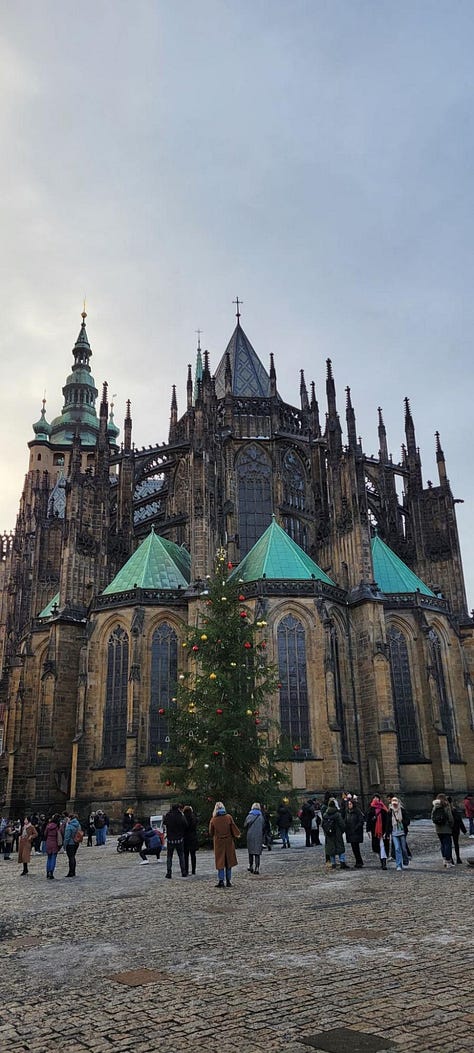

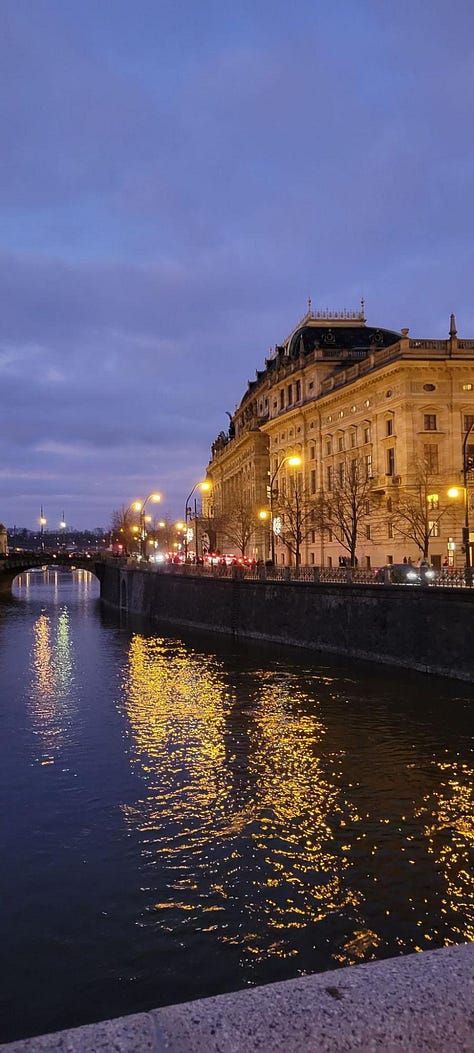
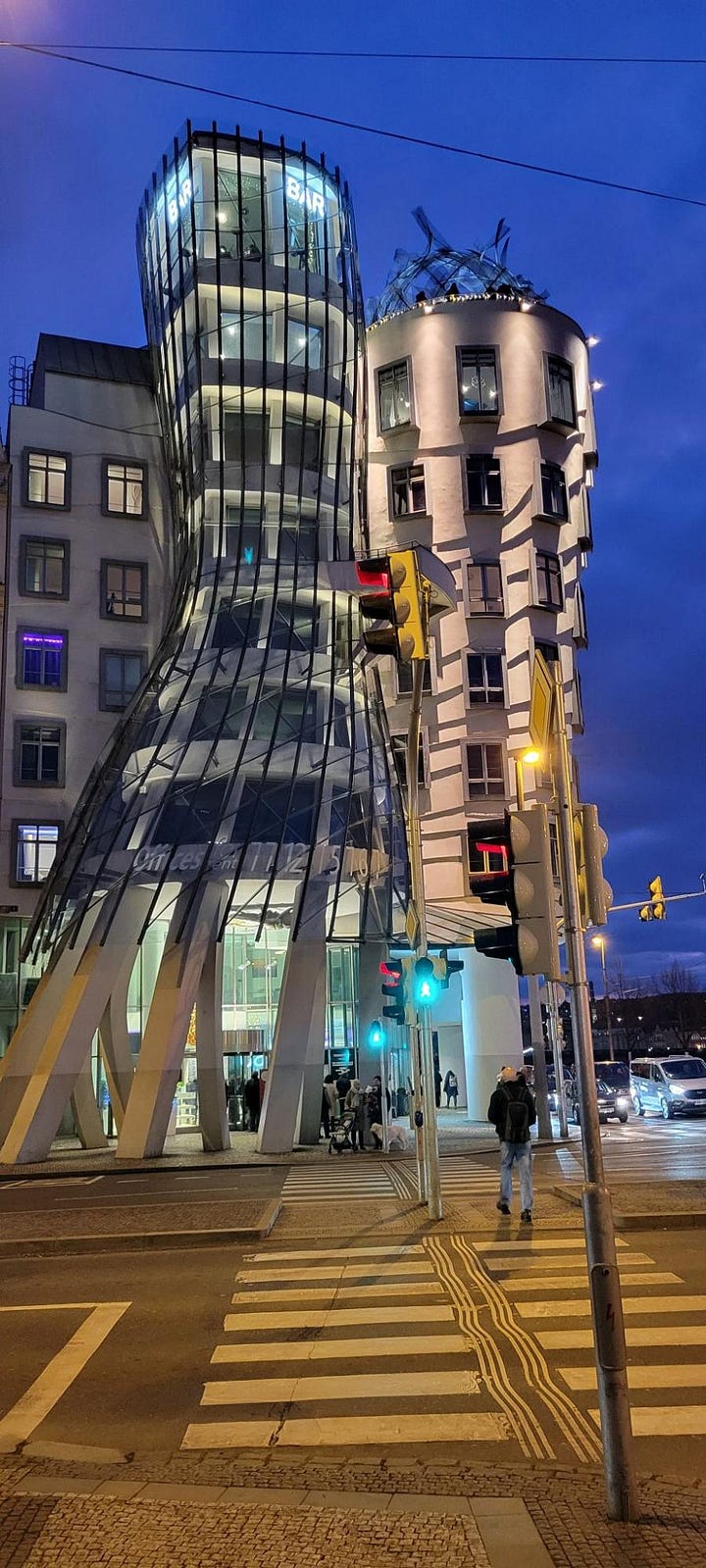
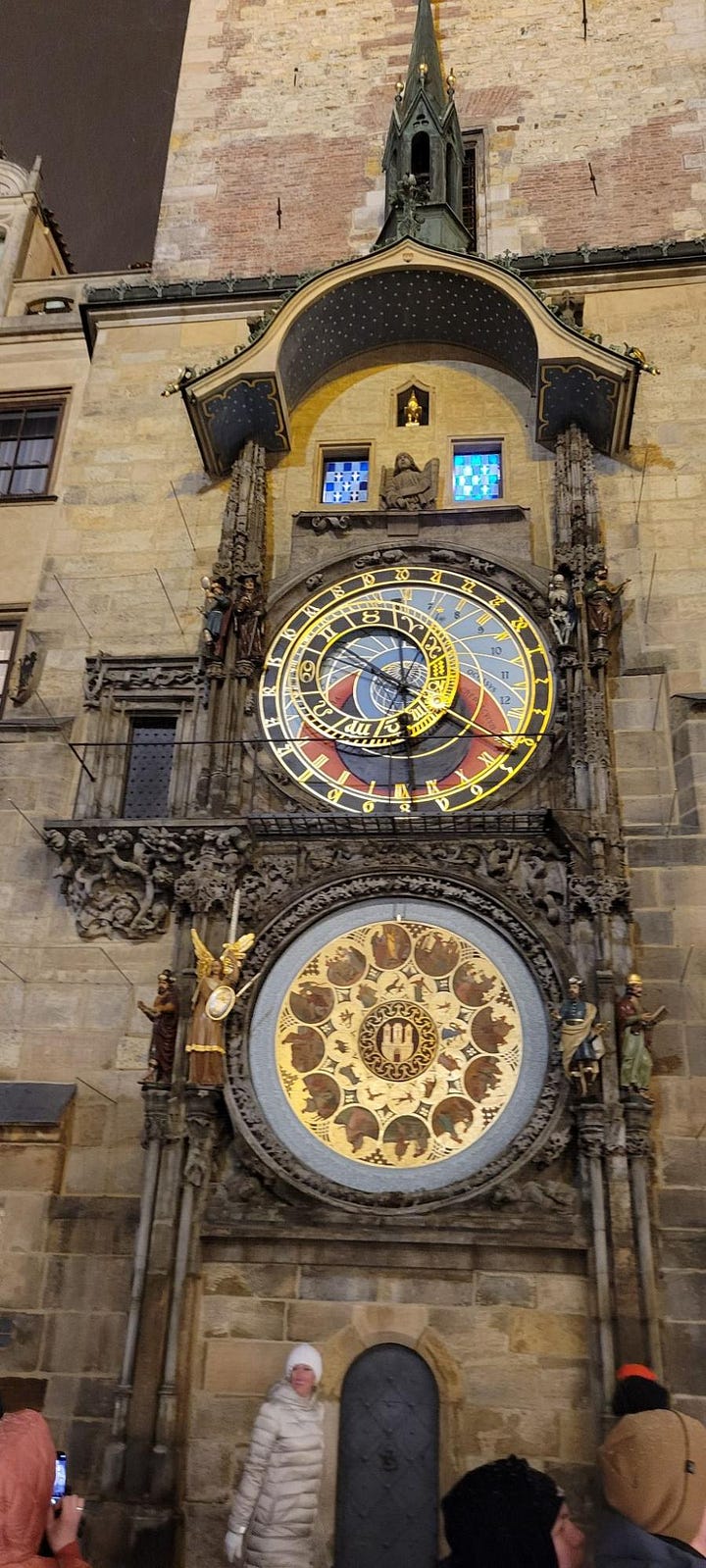
The true loveliness of Prague, though, is in the nooks and crannies, and in the color and cuteness built into all the random corners of the city. A lot of my tourism consisted of just walking around the city and looking at things, and that was a blast. You end up seeing a bunch of places like these:

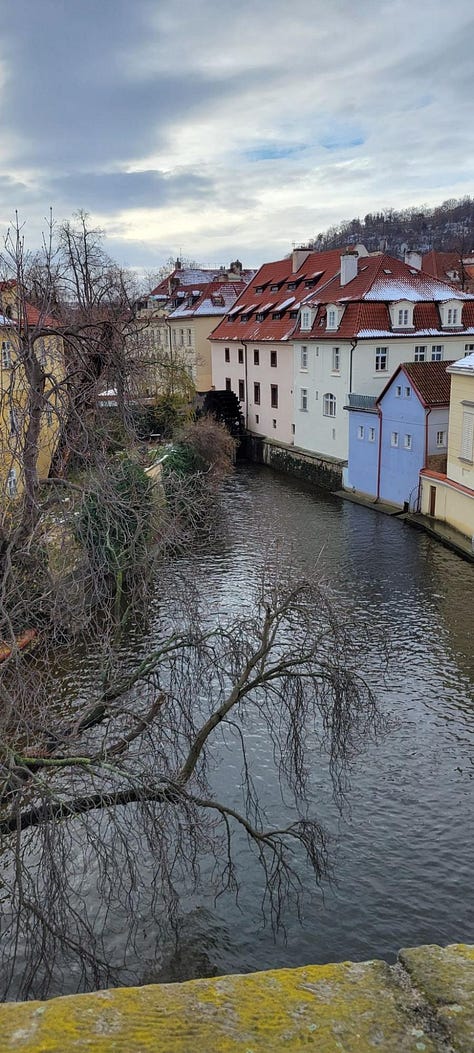
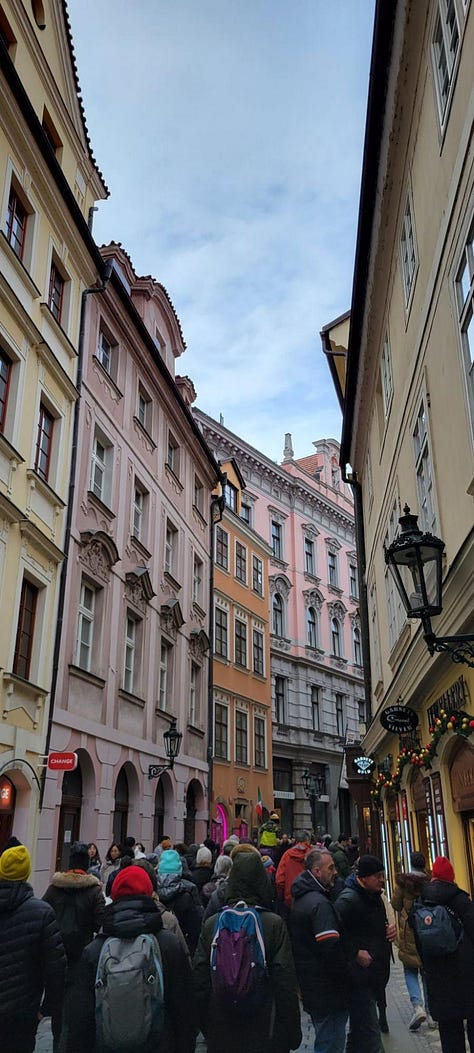
You can wonder the city and get lost in the mystery of its ancient rotundas:
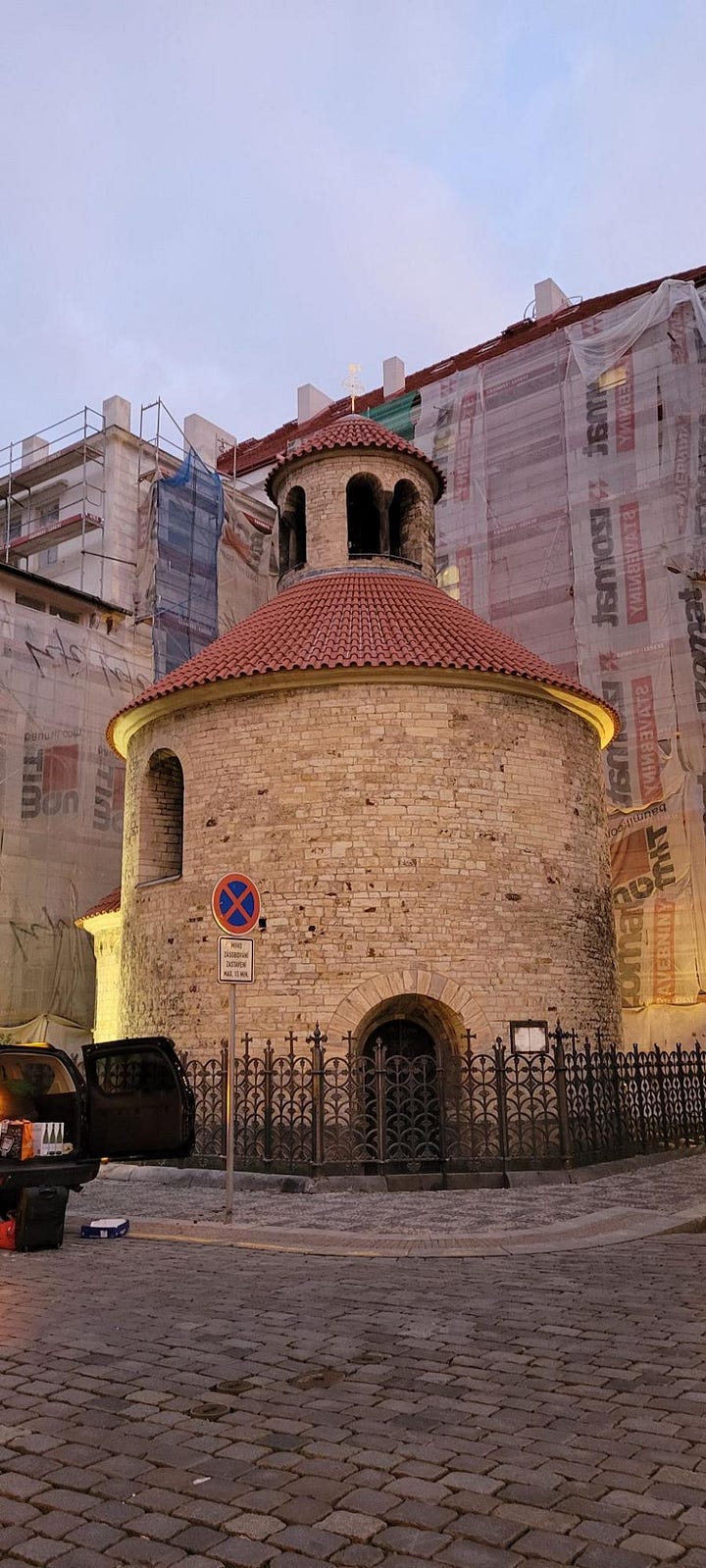
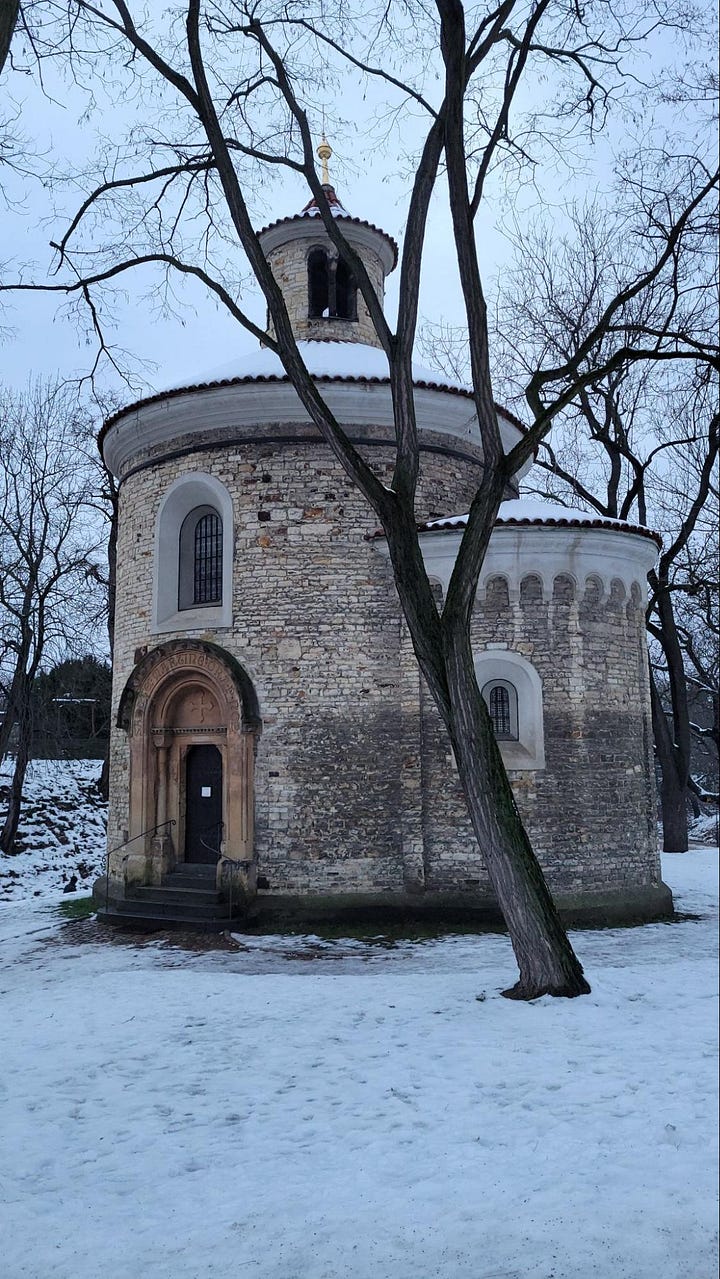
If you search near the Dancing House, you might find this cat cafe:
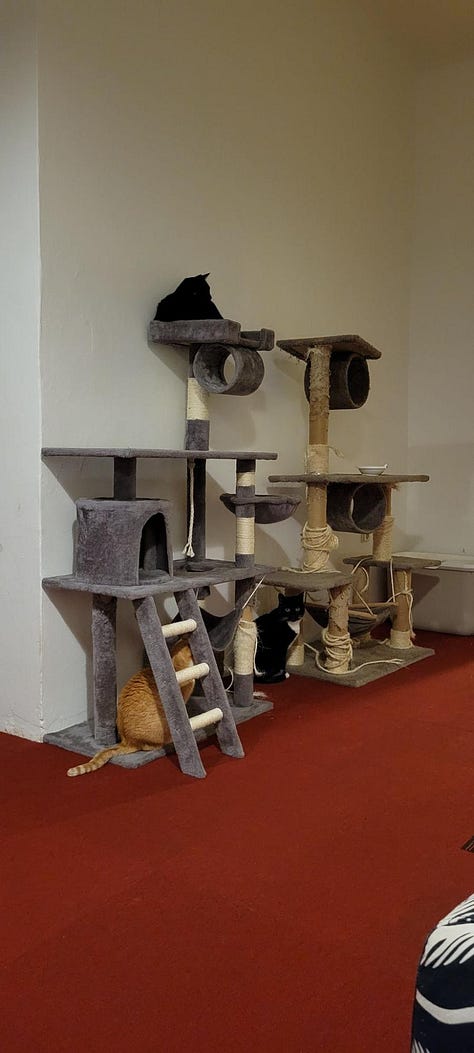
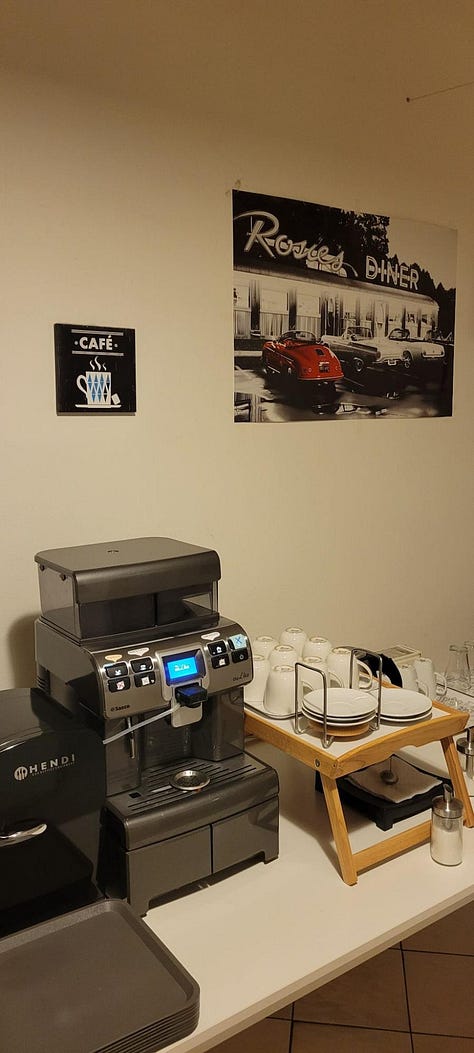
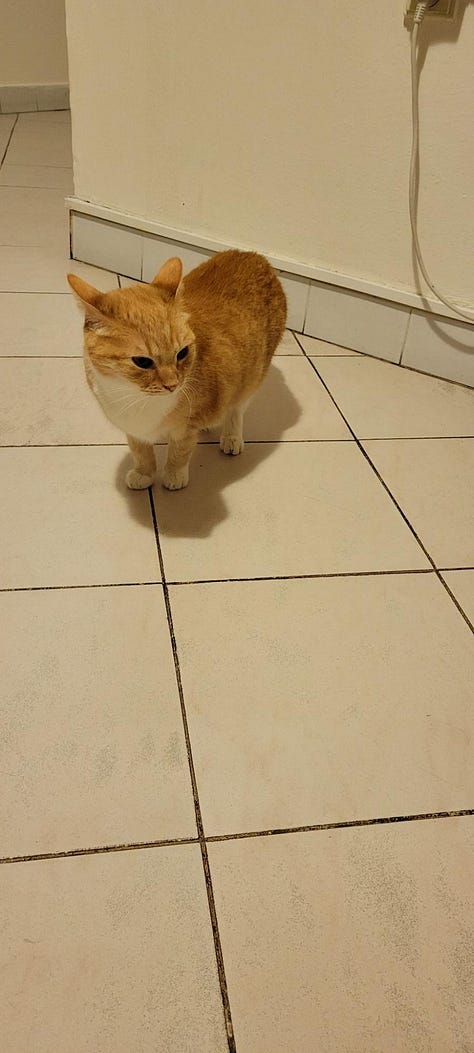
If you’re lucky enough to come here in the winter time, you’ll learn that the Czech’s soul is the soul of an artist, and this compels him to make snowmen, everywhere, in all places, and of every variety. At Vyšehrad, an ancient fortress, there was a brick wall that was covered in tiny snowmen. Thus we know that the artist within the Czech’s bosom is also a stout patriot, yearning to honor the courage of his forebears.
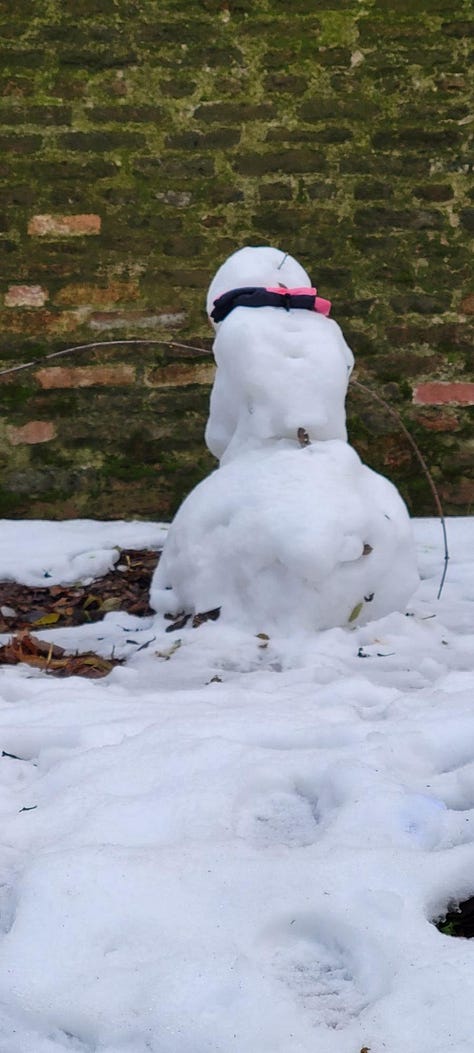
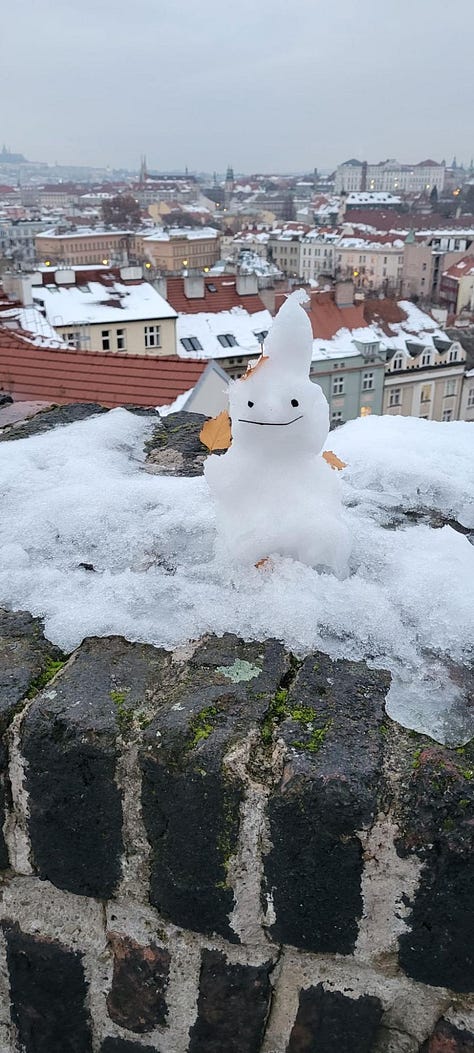
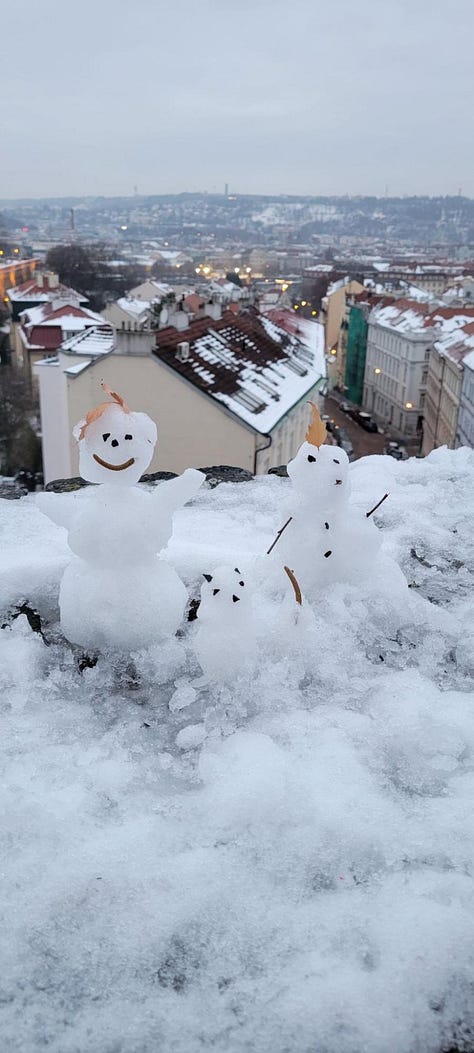
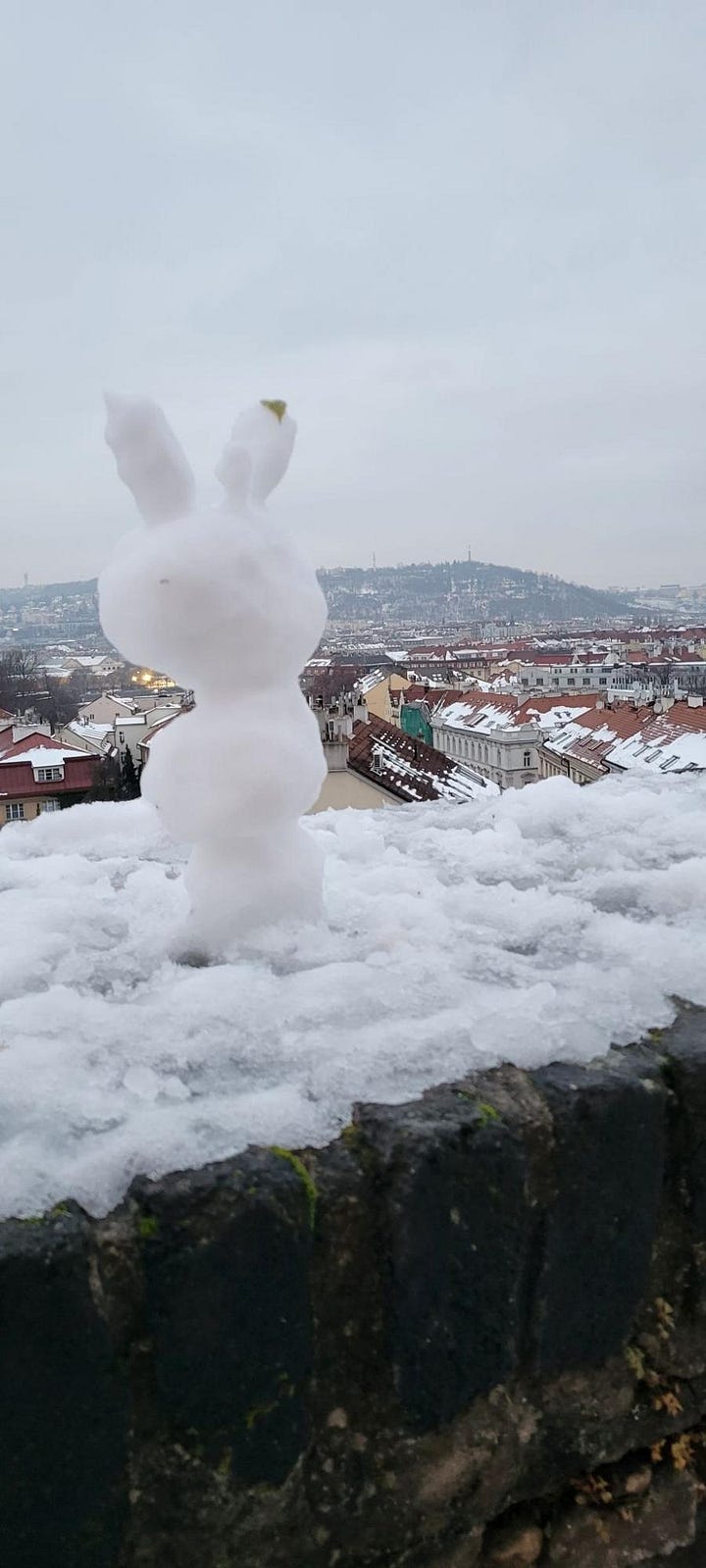
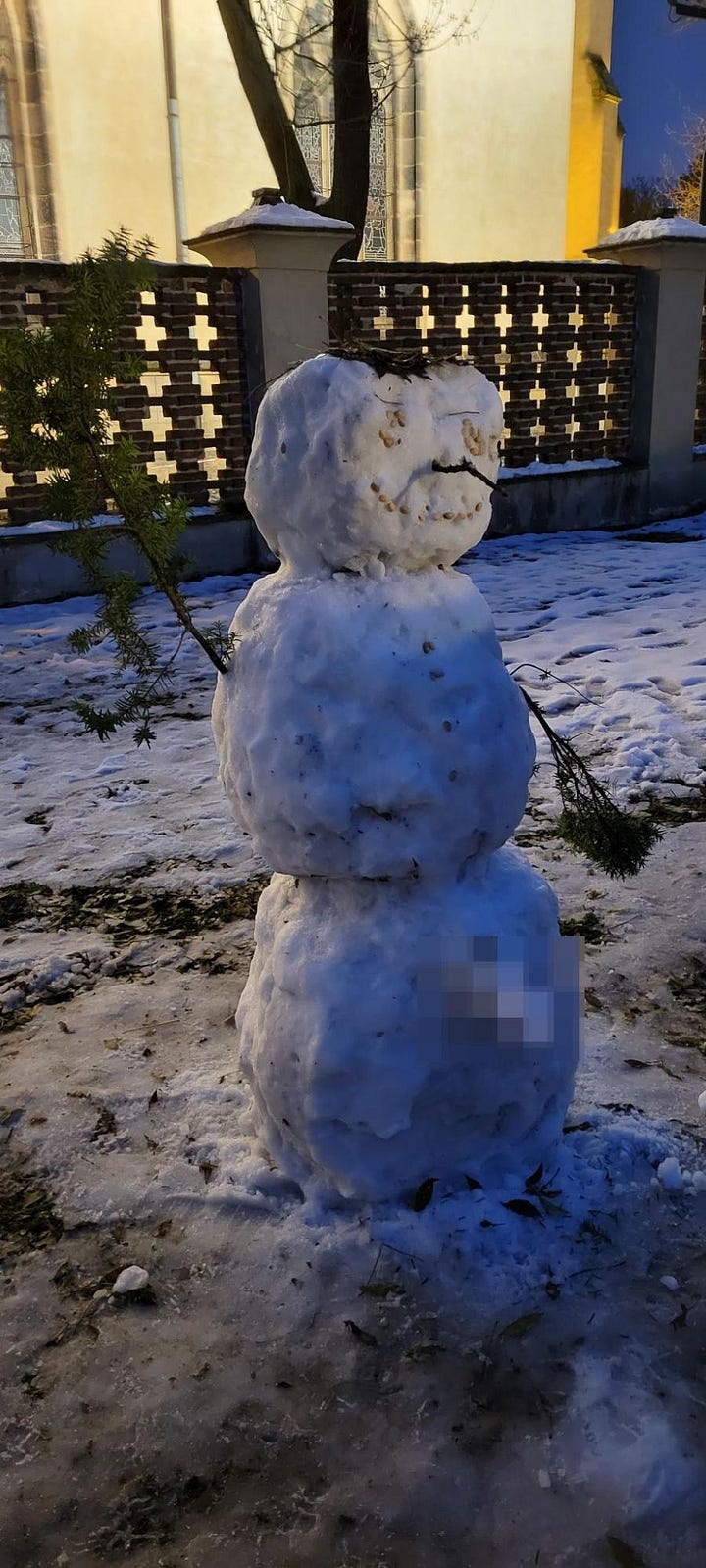
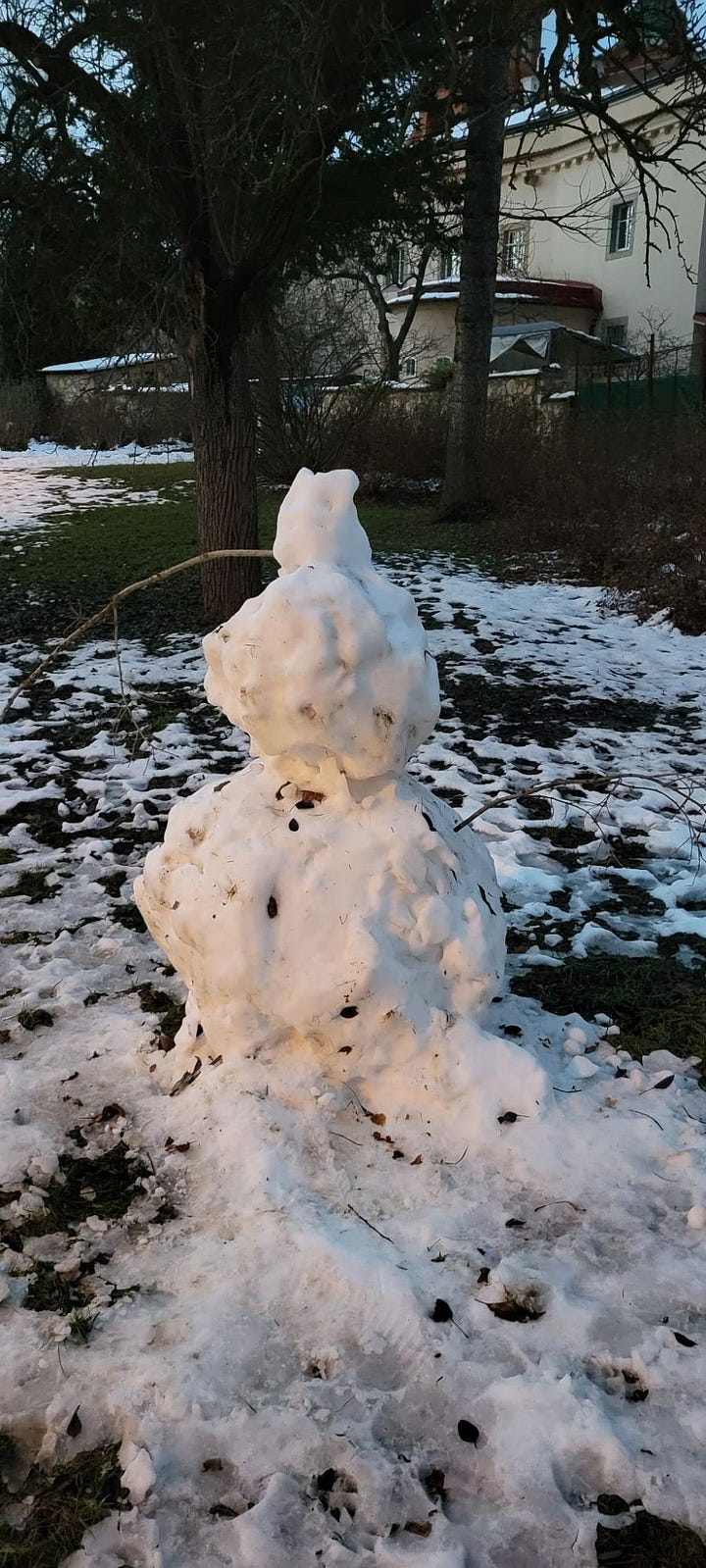
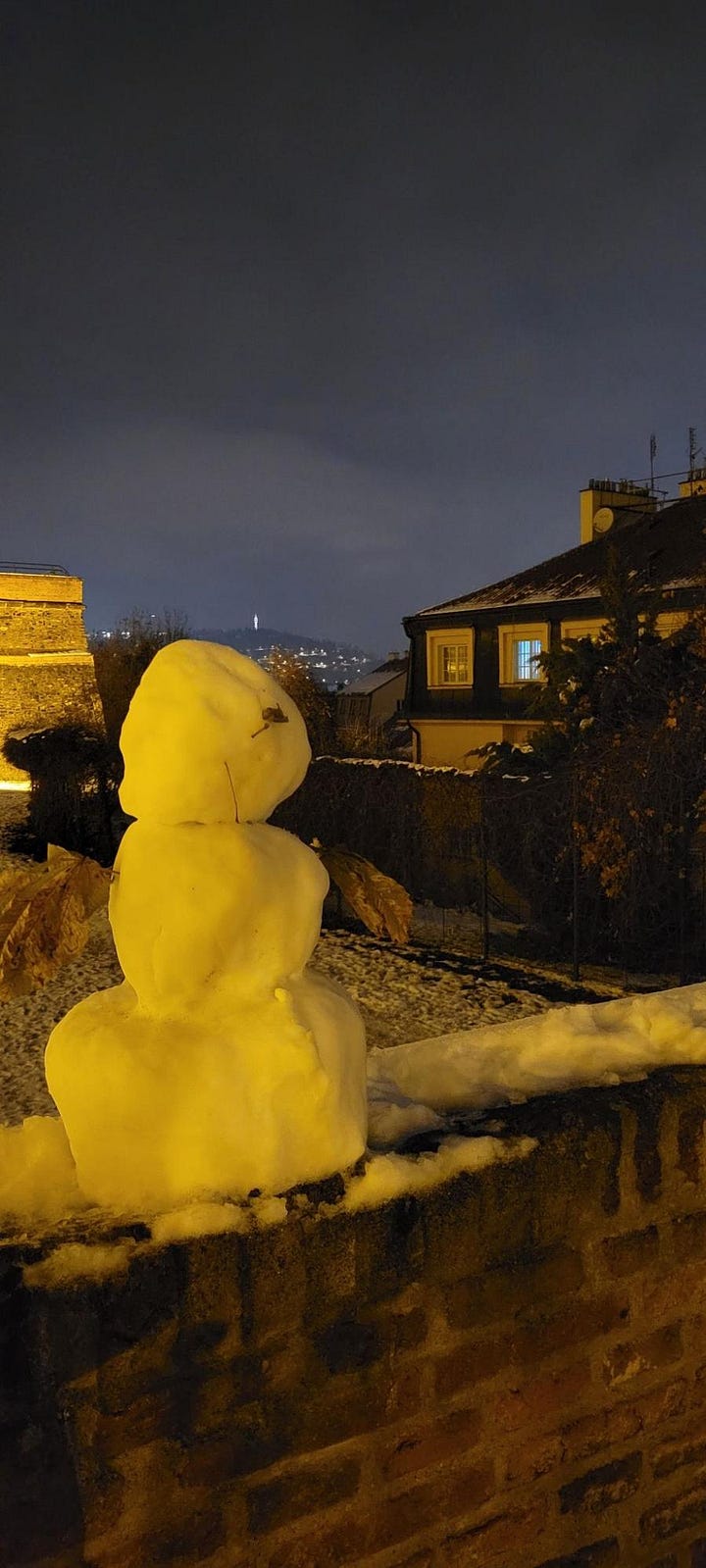
Prague also has a lot of statues. Some of them are normal statues of kings and religious figures. Others are totally weird:
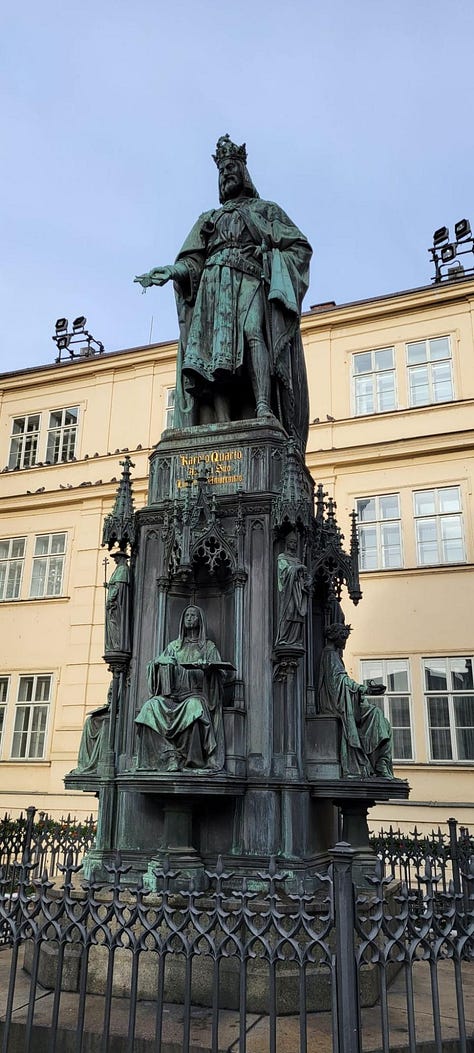
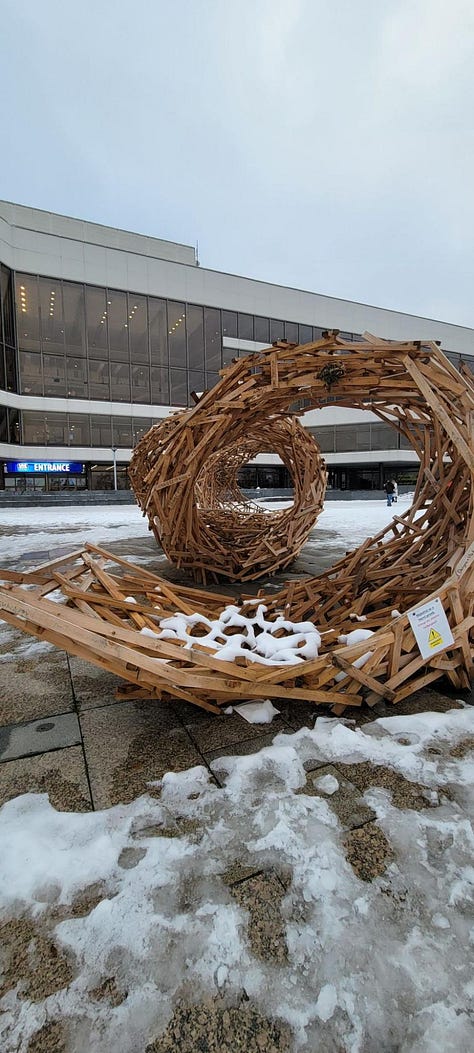
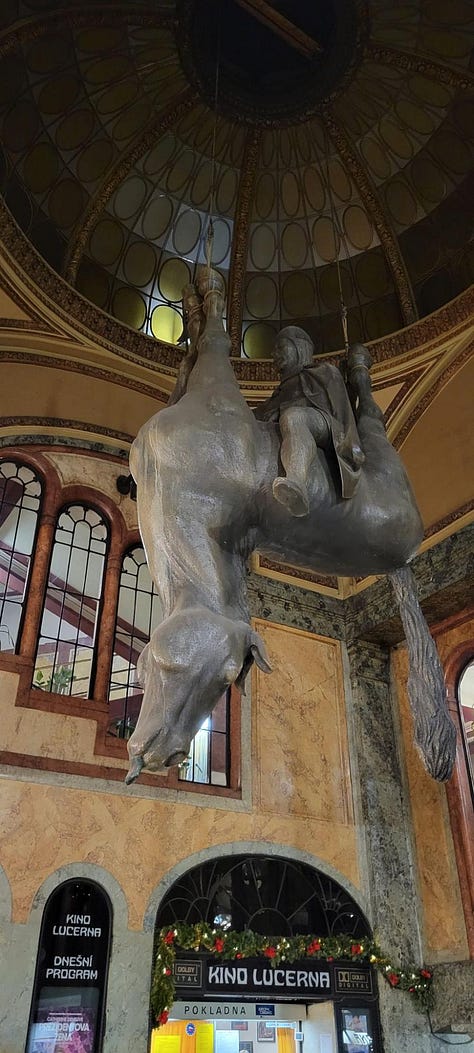


Even the very statue of Franz Kafka’s head is “taking a break”. Is this a metaphor for the exhausted spirit of the Czech’s pre-communist luminaries, yearning to see a reawakening of the modern Czech? Or is it merely an expression of the mundane doldrums we all feel, a mechanical Kafka casting off the cares of the day to fetch a coffee?
After pondering the rotundas, petting the cats, and searching the hearts of the ubiquitous snowmen, I sought out the solace of nature at Divoká Šárka, which was easily reachable by tram.

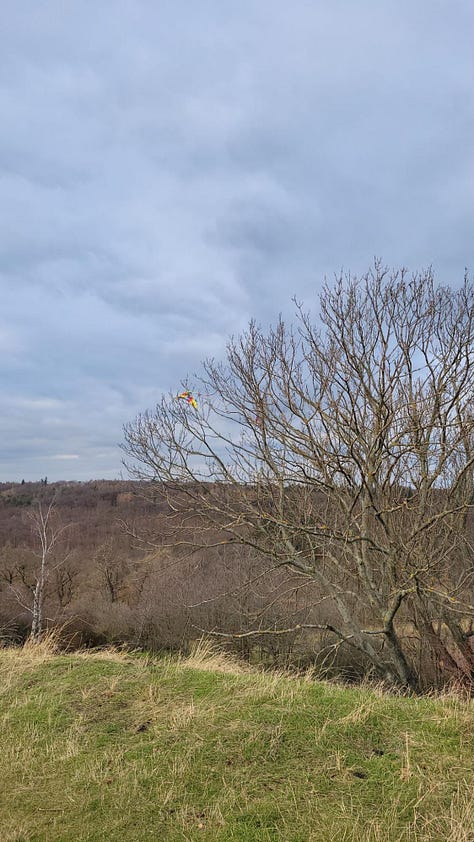
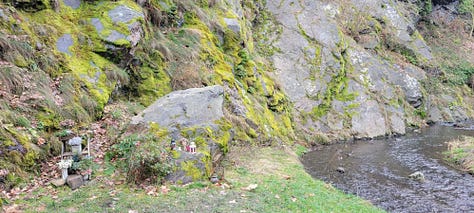
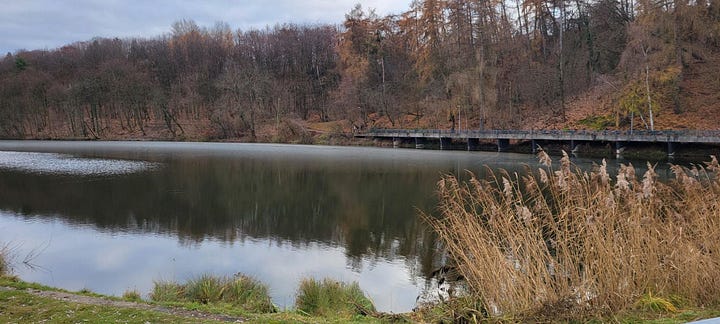
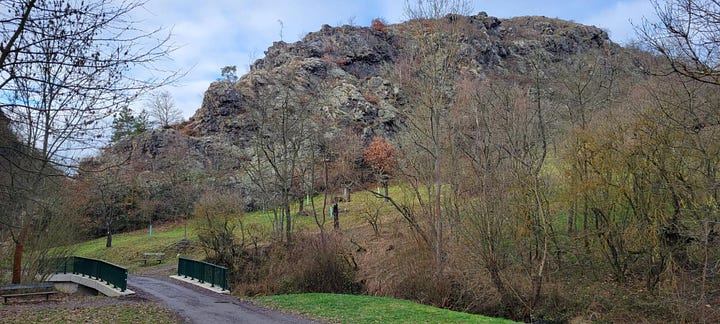
Here we see the hand of the Czech working side-by-side with the hand of God, each writing mystery after glorious mystery for us to ponder. A lovely, tall wooden bench in the park – but how did it get there? A kite, lost in a tree – doth the Czechling yet cry, or is his heart steady in the face of such a loss? Houses for gnomes – does the Czech Republic have gnomes, or is this an expression of imaginative whimsy?
Gem of a city, great for wandering: 8/10.
Overall: 7/10
Prague is a lovely city with indulgent cuisine and rich details. If you need a place to sit and yearn, you’ll find it here (the tall bench in Divoká Šárka is great for that). The city is safe and clean, the people are friendly and cheerful, and the metro is cheap and frequent. There’s a wholesomeness to the city, too: the world feels smaller and slower here, and it makes you want to walk and explore.
Behind the cute city center and the abundant sausage-sauerkraut-beer, though, there was an air of bleakness to the Czech Republic. The locals complained about the rising cost of living against stagnant wages, and the corruption that keeps their universities below their potential. The beauty that Prague is famous for is centuries old. The celebrated churches are no longer houses of worship, and only a lucky few are getting reclaimed for other purposes. At the same time, that bleakness may be receding. A lot of people come to Prague from elsewhere in Eastern Europe. The city is an incredible bridge of opportunity for those countries, plugging them into the industry of the western EU and beyond.
My visit to Prague had a metaphor for this tension between hope and despair: most of the locals told me that a normal Prague winter is “just cold and gray”, and that I was lucky to see the magic of a snowy Prague at Christmastime. Even when the snow melted away, the skies were clear and sunny, and the colors of the city showed in full. Prague may have the perennial struggles of modern Europe, but if you look for the best in it, the city is striving, reaching for the hope around the next corner.
And thus we answer the central question of this essay: the Czech is burdened, but resolved. With his svíčková and pilsener to keep him strong, he will bear the weight of this winter and the next. Well is it that he does, for his city is a jewel in the crown of Europe, a place I loved to tarry in, and a place in which I hope to tarry once more!
Aging, yet lovely. Monochromatic, but delicious. Bleak, but striving. Overall: 7/10
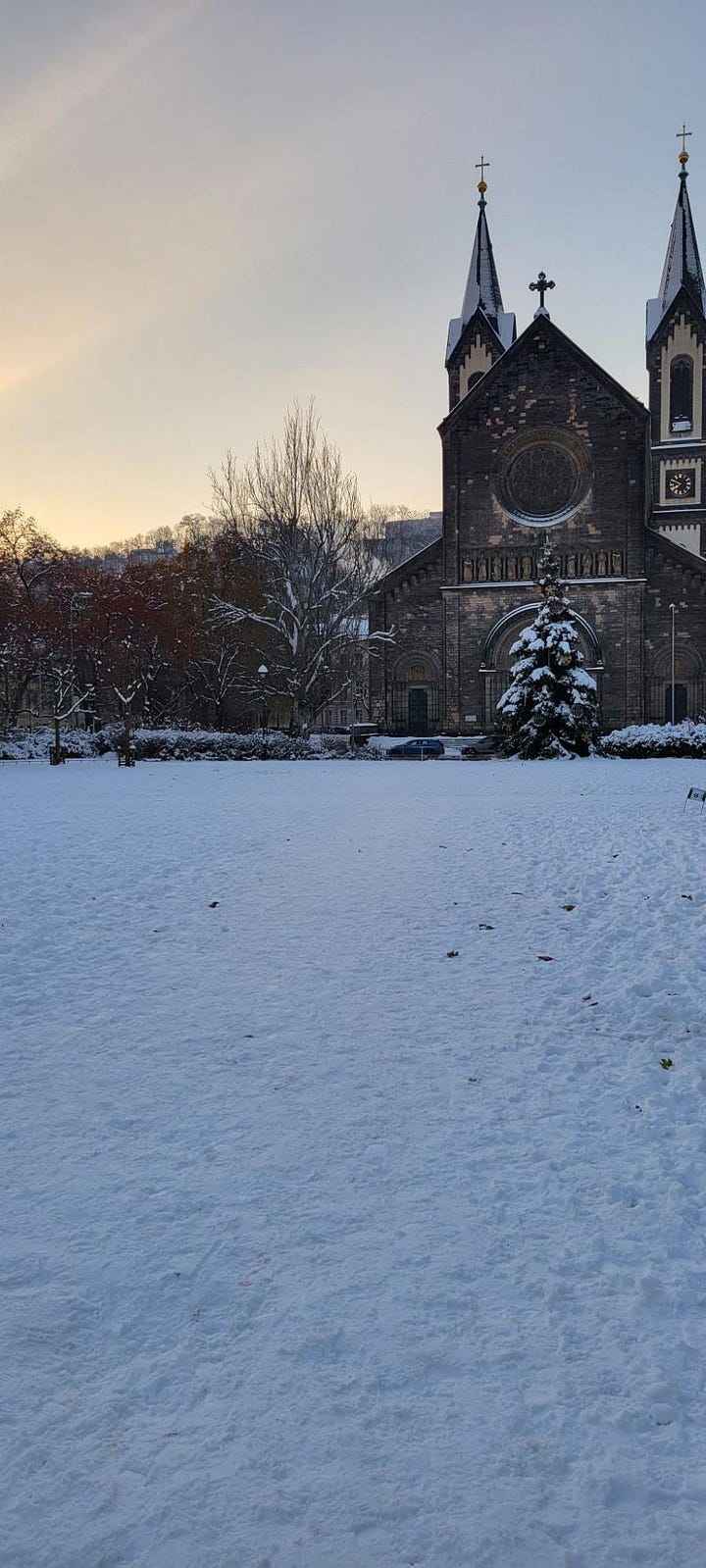
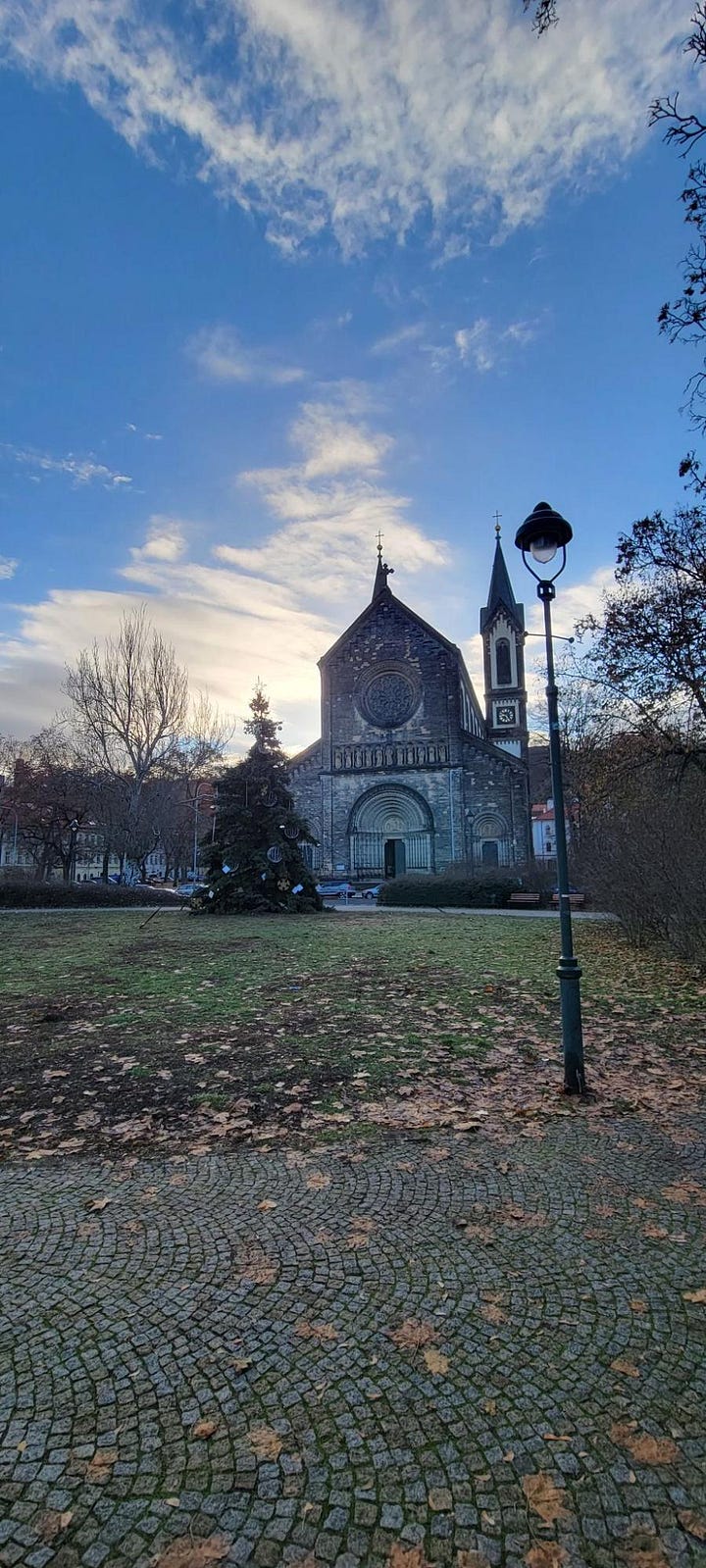
The only truly incomprehensible character in the Czech alphabet is “Ř”. It sounds like a superposition of a rolled “R” with the “zh” sound of, e.g., “vision”. A man I met claims that as a child he had a speech impediment that prevented him from pronouncing “Ř” correctly, but since it appears in his name, he was compelled as a child to overcome this condition through dedicated therapy. Some observers speculate that the human tongue was never meant to say “Ř”, and that learning the letter is a “jumping in” of sorts: a costly rite of passage that bends the young Czech’s heart towards his ancestral culture.
The “Train Challenge” for any city is a challenge to ride every train they have. Some variations exist, however, such as the “CultureTrain” achievement in the SF Bay Area, which is unlocked by making a stop at every stop on the CalTrain, at least for coffee or tea.




